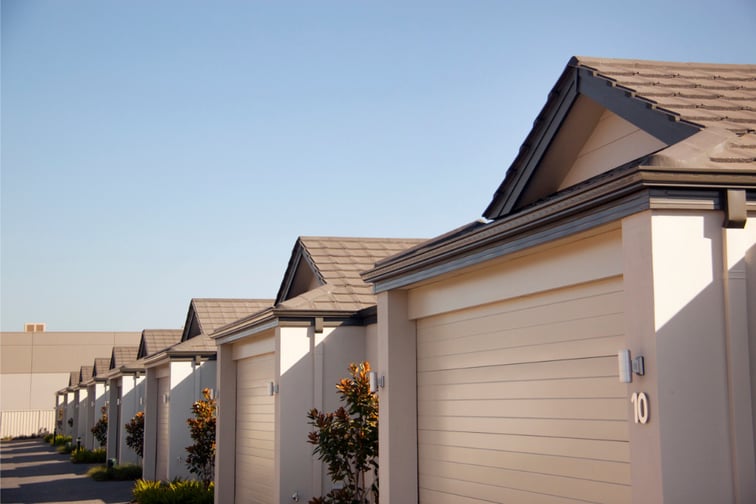

CoreLogic’s monthly Unit Market Update has reported an 8.7% decline in the annual performance gap between houses and units in March, as both markets slipped further from their peak rate growth recorded in January.
National unit values increased 0.3% rise over March, resulting in a first-quarter appreciation of 0.9%. This is equivalent to a $5,464 rise in median unit values through the quarter. National house values, meanwhile, were up 0.8% in March and up 2.8% over the three months to March, which is equivalent to a rise of $21,690 in median values over the quarter.
Not only were houses still recording stronger value growth than units nationally, houses have also recorded a faster deceleration in the pace of quarterly growth. From a cyclical peak in May 2021, the pace of quarterly house growth fell by 4.9 percentage points, compared to a 3.8 percentage point fall for unit quarterly growth. There has also been a slowdown in values in the annual growth trend, with both houses and units moving into a downswing trend after recording cyclical peaks in January.
CoreLogic said affordability continues to be a key factor affecting market conditions. Prospective buyers struggle to save for a deposit amid higher inflation and the rising cost of living, while the amount for a deposit has also increased. Assuming a 20% deposit level, the average house deposit has increased by roughly $36,000 over the past two years, while the typical unit deposit increased by around $15,000.
CoreLogic noted that markets and value segments were not impacted equally by the softer market conditions. Over the month of March, houses across the combined cities saw a 0.5% growth, outperforming units, which were steady over the month. Combined regional house and unit values, however, both posted a monthly appreciation of 1.7%. Capital city unit values remained flat over the month. The lower quartile of unit values saw a modest rise of 0.9%, while the middle and upper segments recorded value changes of 0.2% and -0.5%, respectively.
A similar trend has been observed across the individual capital cities. Unit values are beginning to record quarterly declines across the more expensive cities of Sydney (-0.6%) and Melbourne (-0.2%), while relatively cheap cities like Brisbane and Adelaide are still recording quarterly growth above 4%, CoreLogic said.
Brisbane continues to lead other capital city unit markets with a new cyclical high in monthly (1.6%), quarterly (4.6%), and annual growth rates (15.1%) in March. Adelaide units continue to post strong monthly growth rates, but see a slowing quarterly growth, from 4.4% in January to 4.2% over the three months to March. Perth saw unit values lift by 0.7% over the three months to March, a surprise reversal in its quarterly growth trend potentially due to the reopening of the WA border. Quarterly growth has also remained positive across Hobart, Darwin and Canberra, despite the pace of growth continuing to ease over March.
Regional markets, meanwhile, remain resilient in the face of slowing market conditions, with each market recording positive unit value growth over the quarter. Leading the pace of growth was regional Queensland, posting a quarterly unit value rise of 5.9%, followed by regional WA (4.3%), regional Victoria (3.8%), and Regional NSW (3.6%). Recording the smallest in values, on the other hand, were regional SA units, rising just 0.5% over the quarter, while regional Tasmanian unit values rose by 1.7%. While monthly unit and house growth were on par at the combined regional level, four of the six “rest of state” regions recorded stronger unit growth than houses, CoreLogic reported.
